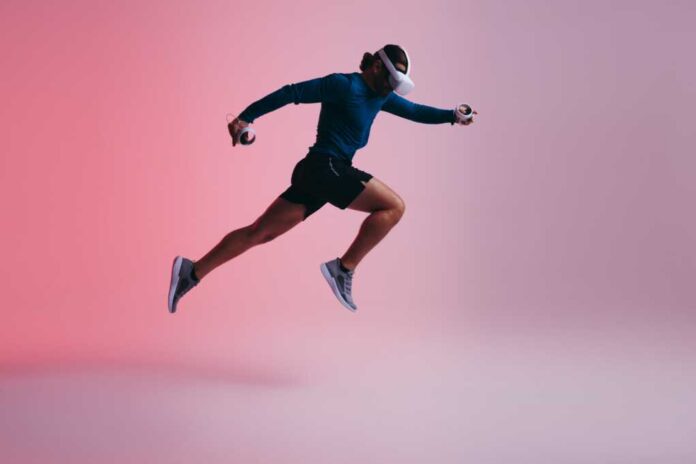
Virtual reality and augmented reality training systems are revolutionizing how athletes and military personnel prepare for real-world challenges, offering a 40% performance improvement across various domains.
At a Glance
- VR training has shown statistically significant effects in enhancing target skills, often outperforming conventional training methods
- Professional teams like the Kansas City Chiefs, Golden State Warriors, and Dallas Cowboys have successfully implemented VR training systems
- VR provides a safe training environment that minimizes injury risks while simulating high-pressure scenarios
- The technology improves decision-making speed, technical execution, tactical awareness, and knowledge retention
The New Frontier in Athletic Training
Virtual reality (VR) and augmented reality (AR) technologies are transforming athletic preparation across professional sports. These immersive systems create realistic game scenarios that enhance visual perception, reaction time, and decision-making skills without the physical risks of traditional training. Studies have consistently shown that VR interventions produce statistically significant improvements in target skills, often surpassing conventional training approaches. For athletes over 40 who want to maintain competitive performance while reducing injury risk, these technologies offer a particularly valuable training alternative.
English Premier League clubs have already adopted VR for cognitive skills training and injury rehabilitation. The technology excels at simulating matchday pressure while providing a safe, controlled environment for practice. This combination of mental conditioning and physical safety makes VR particularly beneficial for athletes concerned about maintaining performance while protecting long-term health. The immersive nature of VR creates experiences so similar to real sports environments that skills learned virtually transfer effectively to actual competition.
— SCAI | سكاي (@SCAI_AI) November 3, 2024
Performance Benefits and Real-World Applications
VR training has demonstrated remarkable results, with data showing a 40% performance improvement across multiple athletic domains. These gains manifest as faster decision-making, better technical execution, enhanced tactical awareness, reduced errors, and improved knowledge retention. For health-conscious athletes, these benefits translate to more efficient training sessions that achieve maximum results with less physical strain. The technology also offers unprecedented customization, allowing training programs to be tailored to individual needs, strengths, and weaknesses.
Professional sports organizations have embraced VR training with impressive results. The Dallas Cowboys integrate VR into quarterback and defensive back training, allowing players to rehearse plays and recognize defensive formations without injury risk. Similarly, the Golden State Warriors use VR for mental conditioning, particularly for high-pressure shooting drills. These real-world applications demonstrate how VR technology helps elite athletes maintain peak performance while minimizing the physical toll of traditional practice sessions—a crucial consideration for health-conscious individuals seeking longevity in their athletic pursuits.
Skills needed to become a Computer Vision Engineer
Introduction
Are you someone looking to kickstart your career in Computer Vision but don’t know where to start?
Finding the right online resources and having the right roadmap to becoming a Computer Vision pro can be daunting.… pic.twitter.com/kLhBAMqTj1— OpenCV University (@OpenCVUniverse) March 26, 2024
Physiological Adaptations and Future Applications
Recent research has uncovered surprising physiological benefits of VR training. The technology can help regulate body temperature during exercise by using visual stimuli to influence physiological responses. When athletes view hot environments in VR, their bodies increase sweating, which helps cool them more efficiently during exertion. This adaptation mechanism has significant implications for those training in extreme conditions. For health-conscious athletes concerned about heat stress and its impact on cardiovascular health, VR offers a safer method to build heat tolerance.
VR training addresses several limitations of traditional approaches, including physical constraints, situational repetition challenges, and cognitive overload. The technology also supports the development of muscle memory through immersive, repeatable practice sessions. While VR won’t replace physical training entirely, it offers practical advantages by overcoming constraints like time, geography, and weather. Research continues to explore VR as a tool for adapting to extreme environments, which could benefit not only athletes but also workers and military personnel who must maintain health while performing in challenging conditions.


















